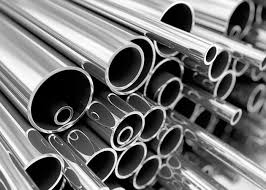In the dynamic world of stainless steel alloys, 310S stainless steel pipes stand out as a powerhouse, combining corrosion resistance, high-temperature strength, and versatility. This alloy, an evolution of the renowned 310 grade, has found widespread use in critical applications, ranging from industrial processes to energy production. This blog post will delve into the distinctive features, manufacturing processes, and diverse applications that make 310S stainless steel pipe indispensable in various industries.
Key Features of 310S Stainless Steel Pipes –
High Temperature Resistance –
310S stainless steel pipes excel in environments with elevated temperatures. Their remarkable resistance to heat makes them ideal for applications such as heat exchangers, furnace components, and exhaust systems.
Corrosion Resistance –
The corrosion resistance of 310S stainless steel is exceptional, particularly in acidic and corrosive environments. This property makes it suitable for chemical, petrochemical, and pharmaceutical applications.
Oxidation Resistance –
Adding high levels of chromium and nickel in the composition of 310S stainless steel provides outstanding oxidation resistance. This characteristic is vital in applications where the material is exposed to air and high temperatures, preventing scale formation.
Versatility in Forming and Welding –
310S stainless steel pipes offer excellent formability and weldability, allowing for the creation of intricate shapes and structures. This versatility is advantageous in the construction, oil and gas, and manufacturing industries.
Manufacturing Process –
The production of 310S stainless steel pipe involves a series of key steps –
Melting and Casting –
Raw materials, including iron ore, chromium, and nickel, are melted in a furnace to create molten metal.
Hot Rolling –
The molten metal is subjected to hot rolling to reduce thickness and shape the material into coils or sheets.
Annealing –
The hot-rolled material undergoes Annealing, a heat treatment process that relieves stress, enhances mechanical properties, and improves corrosion resistance.
Cold Rolling and Forming –
Following Annealing, the material is cold-rolled to achieve the desired thickness, and then it is formed into pipes using various processes, including seamless or welded methods.
Applications of 310S Stainless Steel Pipes –
Chemical and Petrochemical Industries –
Due to its outstanding corrosion resistance, 310S stainless steel pipe are extensively used in chemical processing plants and petrochemical refineries for conveying corrosive fluids.
Energy and Power Generation –
310S pipes are employed in energy production facilities, including power plants and nuclear reactors, where high-temperature strength and corrosion resistance are critical.
Manufacturing and Construction –
The versatility of 310S stainless steel pipes makes them valuable in the manufacturing sector for fabricating components and in construction for applications requiring corrosion resistance and strength.
Automotive and Aerospace –
310S stainless steel pipes find applications in exhaust systems and other components in the automotive industry and aerospace applications where resistance to extreme temperatures is essential.
Conclusion –
310S stainless steel pipes stand at the forefront of materials engineered for high performance and reliability. Their ability to withstand extreme temperatures, resist corrosion, and offer versatility in fabrication has positioned them as a key player in a wide range of industries. As technology advances, 310S stainless steel pipes will likely remain an integral solution for applications demanding durability, resilience, and unmatched performance.



